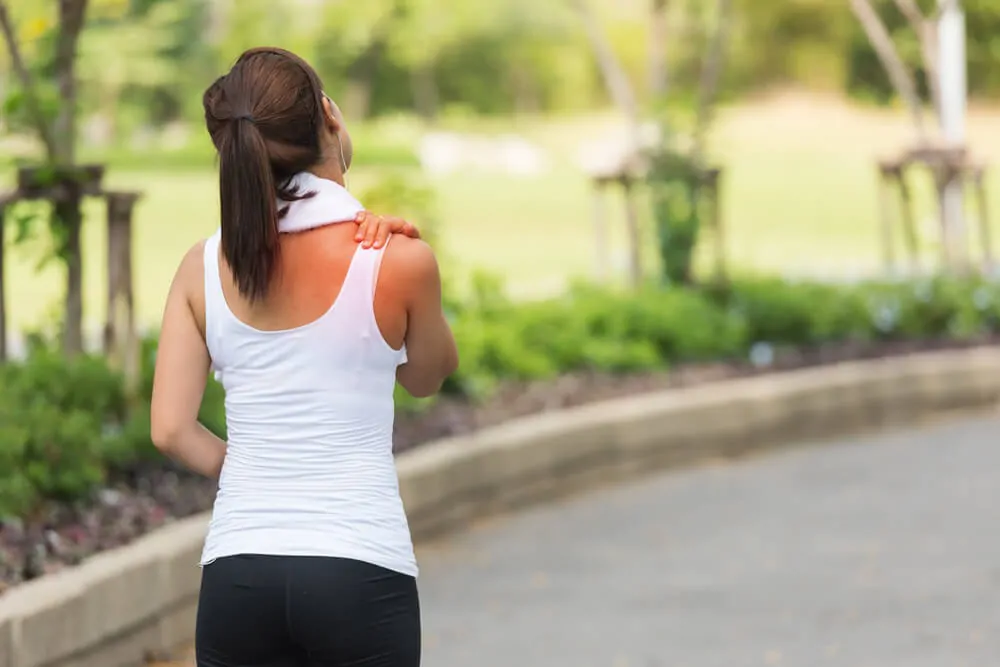
The thoracic spine, also known as the upper or middle back, provides stability to anchor the rib cage and safeguard vital organs in the chest. Upper back pain often results from poor posture, muscle overuse or injury.
The upper back is located between the base of the neck and the bottom of the ribcage, consisting of 12 bones collectively referred to by doctors as the thoracic spine. The first bone of the upper back begins at the base of the neck and the 12th bone ends just below the ribcage. Upper back pain can occur anywhere between these bones.
People who experience pain in this area describe it as a burning or pulling sensation in a particular place, which may be the location of injury or strain. The non-invasive B-Cure Laser is a potent yet user-friendly device, that delivers safe treatment to reduce upper back pain at home.

Symptoms of upper back pain vary between individuals. Some may experience subtle pain dissipating after a few days, while others face exacerbation affecting daily routines. Sharp pain, akin to a knife prick or burning sensation, often targets a specific spot without spreading. Untreated pain, whether sharp or regular, may progress to stiffness, limiting mobility in the upper back muscles or joints.
Projection of pain – Upper back pain originating from nerve injury or inflammation may extend and project to the arm, chest, or stomach. Typically felt on one side of the body, those experiencing this projection may sense tingling, weakness, or numbness in the affected area.
If back pain intensifies, it can impede the sufferer’s capacity to engage in routine activities like lifting moderate to heavy objects, throwing a ball, or even sitting comfortably.
If back pain develops without injury or trauma, most people can treat the pain on their own in the following ways:
Rest and modify movement – if the pain intensifies during specific actions or movements, it’s advisable to avoid these painful motions and take a break. Once rested and the pain subsides, cautiously resume the activity. Note: excessive rest may weaken muscles, potentially causing additional pain.
Over-the-counter (non-prescription) creams and medications – a wide array exists for pain relief. Verify potential side effects and note that most non-prescription medications address pain but not the underlying issue.
Massage – many find that massage offers relief from back pain. Even if the effects are temporary, a good massage can alleviate tight muscles and enhance blood flow to the affected area.
If the back pain continues following rest, most people turn to medical professionals and treatments to alleviate the pain and find the root cause.
The treatments offered include:
B-Cure Laser delivers groundbreaking laser therapy, harnessing the power of professional lasers used in clinics, all in a lightweight, portable device designed for convenient home use.
The treatment is safe and effective and may provide lasting pain relief.
Advanced laser technology fuels B-Cure Laser’s restorative power.
Place B-Cure Laser in contact with the skin to allow the photon energy to penetrate the tissues. This stimulates the body to produce adenosine triphosphate, also known as ATP, which carries energy within the cells. The ATP interacts with various biomolecules inside the cells to promote normal cell function and enhance the body’s natural processes.
Patients recover from muscular, skeletal, and nerve injuries as cells regenerate faster and function better.
To treat upper back pain, address all painful vertebrae along the spine. Also, target the right and left scapula, treating each point for 8 minutes. Experience indicates potential pain relief within days.
An adjustable stand facilitates ease of use, stabilising the device for treatment without movement and enabling deep laser beam penetration into tissues.
For optimal results, repeat the treatment at least twice a day.
